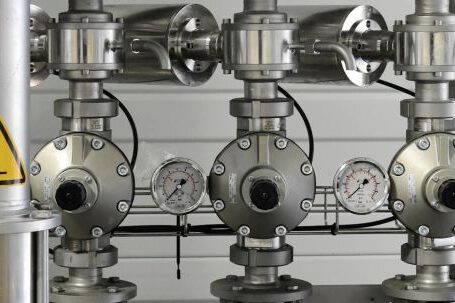Are you frustrated with low water pressure in your home? Don’t worry, you’re not alone. Many homeowners face this common problem, but luckily, there are several solutions available. In this article, we will discuss the possible causes of low water pressure and provide you with some troubleshooting tips to help you address the issue effectively.
Identifying the Problem
Before diving into the troubleshooting process, it’s essential to identify the root cause of the low water pressure. There can be various reasons behind this issue, including:
1. Clogged Pipes: Over time, mineral deposits and debris can accumulate in your pipes, leading to reduced water flow.
2. Faulty Pressure Regulator: The pressure regulator is responsible for maintaining consistent water pressure. If it malfunctions, it can result in low water pressure.
3. Leaks: Leaky pipes, faucets, or fixtures can cause a drop in water pressure. Check for any visible signs of leaks, such as water stains or dripping faucets.
4. Water Supply Issues: Sometimes, the low water pressure problem may be due to issues with the municipal water supply. In such cases, contacting your water provider can help you determine if there are any ongoing problems in your area.
Troubleshooting Tips
Now that we have identified some potential causes let’s explore some troubleshooting tips to address low water pressure issues:
1. Check for Clogged Pipes: Start by inspecting the aerators on your faucets. If they are clogged with mineral deposits, remove and clean them thoroughly. You can also try flushing out your pipes by turning off the main water supply and then opening all the faucets in your home. This will help dislodge any trapped sediments.
2. Examine the Pressure Regulator: Locate the pressure regulator, which is typically near the main water supply line. Check if it is functioning correctly or if it needs replacement. If you’re unsure about this task, it’s best to consult a professional plumber.
3. Fix Leaks: If you notice any leaks, repair them promptly. Even small leaks can lead to significant water loss and decreased pressure.
4. Remove Flow Restrictors: Some faucets and showerheads have flow restrictors to conserve water. While they are useful for water conservation, they can also contribute to low water pressure. Consider removing these restrictors to see if it improves the water flow.
5. Check Water Valves: Ensure that all water valves, including the main shut-off valve, are fully open. If any valves are partially closed, it can cause a drop in water pressure.
6. Contact Your Water Provider: If you’ve exhausted all troubleshooting options and are still experiencing low water pressure, it’s a good idea to reach out to your water provider. They can check if there are any known issues in your area and provide guidance on resolving the problem.
Conclusion
Low water pressure can be a frustrating issue, but with the right troubleshooting techniques, you can often resolve it yourself. By identifying the underlying cause and following the troubleshooting tips mentioned in this article, you’ll be well on your way to enjoying consistent water pressure in your home. Remember, if you’re unsure about any steps or if the problem persists, don’t hesitate to seek professional help.



